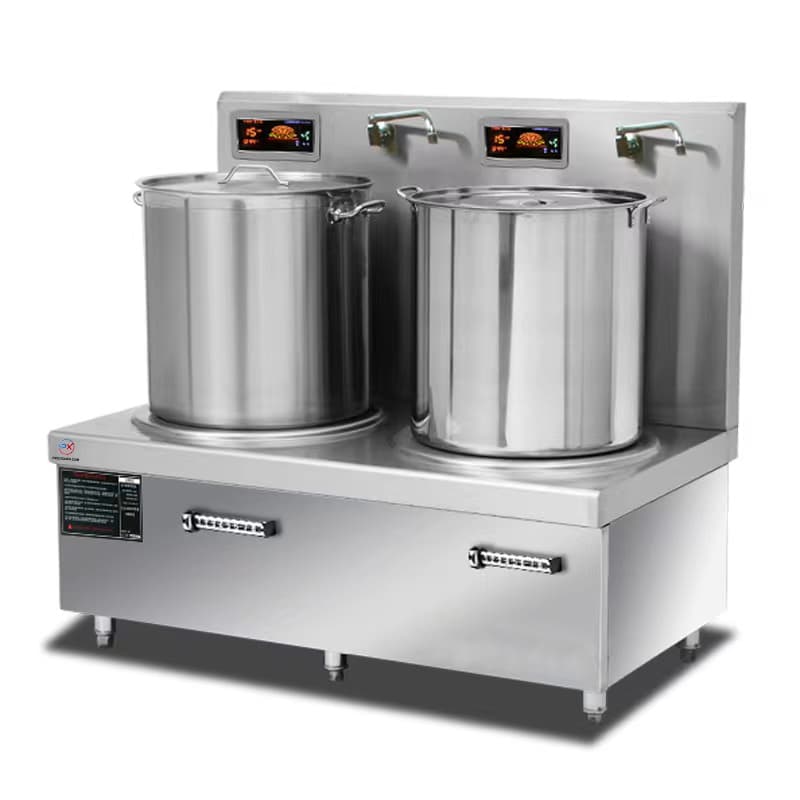The core of a commercial induction cooker, as we've discussed before, is integral to its operation, similar to a computer's motherboard. Its heating principle involves generating eddy currents to induce rapid, irregular movement of iron molecules in the cookware, resulting in molecular collisions and friction that produce heat. Below, Guangdong PXKITCHEN briefly analyzes the advantages of voltage regulation control and undervoltage protection in commercial induction cooker cores:
Voltage regulation control: When the voltage rises or the load lightens, causing an increase in the output voltage of the switch power supply, the voltage rise at both ends of EC092 is sampled and amplified by the error amplifier inside U091. This amplified signal then controls the PWM modulator, reducing the duty cycle of the excitation signal output by the PWM modulator. This shortens the conduction time of the switching tube, decreasing the energy stored in TR091 until the output voltage of the switch power supply returns to normal. Conversely, the voltage regulation control process is reversed.
Undervoltage protection: If abnormalities occur in the voltage regulation control circuit, self-powered circuit, or load circuit, causing the working voltage of U091 to drop below 8V, the undervoltage protection circuit OLP inside U091 activates. This action shuts off the PWM pulse output of the amplifier and cuts off the switching tube to prevent damage due to insufficient excitation, thereby achieving undervoltage protection.
Guangdong PXKITCHEN Equipment Co., Ltd. is guided by market demand, driven by technological advancement, supported by strong capabilities, and actively solicits customer feedback while attracting technological talent to conduct in-depth research on cooking and dietary habits in various regions.
